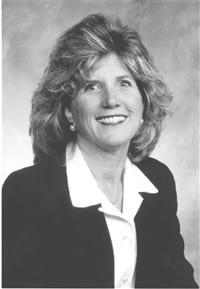House Calls In Hampshire County VNA/Hospice Alliance Aims To Meet A Growing Need
To hear Carla Braveman tell it, Massachusetts residents need home health services more than ever, and that need will continue to grow as the population continues to age.
And to grow, said the director of the Northampton-based VNA/Hospice Alliance, facilities will have to overcome not only financial strains caused by inadequate reimbursement, but also an increasing patient load caused by an exodus by many home-care providers from the field.
Those two pressure feed off each other, Braveman told The Healthcare News, but she believes the future of home care remains positive, if only because more and more people are recognizing the unique range of services it offers.
“We believe home care is going to grow because, with the aging population, more folks are in need of care, and more people are living alone without family members in the area,” she said. “After an episode of acute illness, they need more supportive services.”
A Needed Lifeline
The VNA/Hospice Alliance, which is affiliated with Cooley Dickinson Hospital, testifies to that growing need, now serving 325 patients every day throughout Hampshire County — and many more in total — with 117 employees.
“We do what I call home health care, which, through our visiting nurse program, provides skilled, intermittent services to people in the home, primarily under Medicare and other insurances,” Braveman said.
Those services, provided by nurses, social workers, and home health aides, range from diabetic teaching; cardiac assessment; and physical, occupational, and speech therapy to wound care; cardiac assessment; and rehabilitation after hip fractures, joint replacement, surgery, and strokes.
“The focus is usually after an illness or exacerbation of an illness, with the goal to stabilize the patient,” she said. “Someone who has been ill is given an assessment, and we go in for a period of time to take care of that person.”
On the hospice side, the alliance provides medical, spiritual, and psychosocial care to people who have a terminal prognosis of six months or less to live. In these cases, nurses, social workers, pastoral care providers, home-care aides, and volunteers go into the home, again on an intermittent basis, to comfort patients and manage symptoms.
“For example, hospice would see the person who chooses not to have aggressive chemotherapy for his tumor, but wants to be comfortable for the days he has left,” Braveman said. In the past, virtually all patients in this program were cancer-stricken, but now all terminal conditions are eligible, and cancer accounts for only about half.
In addition, the alliance can provide private-duty care in the home for patients struggling with acute illness, and it also provides a visiting doctor program that provides physician house calls to homebound patients — the only service of its type offered by a home health care agency in Western Mass.
“We recognized that there are a number of elders in the community who are unable to leave their home, and a lot of these people haven’t had good medical care because they can’t get to the doctor’s office,” Braveman said.
About 20 people are now enrolled in the program, by which a physician working part-time for the VNA/Hospice Alliance makes visits to give physicals and flu shots and treat sick patients, among other services. Patients who have regular physicians but find themselves temporarily homebound may also access the service while convalescing.
“Some of our patients haven’t seen a physician in eight or nine years,” she said, “so that program is becoming very successful.”
Financial Stress
With increasing numbers of senior citizens needing medical assistance at home, the need for such services is clearly on the rise. But inadequate reimbursements from public payers have strained the means of many home-care services, and 40{06cf2b9696b159f874511d23dbc893eb1ac83014175ed30550cfff22781411e5} of such agencies have closed nationwide over the past four years — and 27{06cf2b9696b159f874511d23dbc893eb1ac83014175ed30550cfff22781411e5} in the Bay State.
“Those of us that remain are left caring for more patients,” Braveman said. “It has been difficult the last couple of years. There’s a gap between what it costs to provide care and what is reimbursed.”
Furthermore, Medicare provides home-care services only for people who are acutely ill. “So many people out there are chronically ill and need ongoing, supportive care, but Medicare doesn’t pay for that,” she said. Most of those with chronic illnesses, must therefore pay for home health services out of their own pockets. An inadequate funding system, then, hurts both patients and care providers, she added.
Still, home care boasts some positive trends, too. Indeed, while most health fields, in Massachusetts and nationwide, struggle with a persistent nursing shortage, the home health field has bucked that trend. Part of that success might be due to the unique nature of a home-care nurse’s job, she added.
“From an employee perspective, it’s incredibly satisfying to go into a person’s home and care for them within their own element,” she said. “It provides an independent practice setting, a different type of setting, and I think that’s why home care is not faced with as much of a shortage at this time.”
That’s a positive sign, she said, because the need for home-care services will only continue to grow as the population rises and people live longer with difficult medical conditions. One key to the continued success of such services, she added, is a close working relationship with the area’s hospitals to create a logical flow of services and avoid duplication — because in a health care system already straining with financial and staffing woes, inefficient practices would make health care even more difficult.
“The outlook for home care is good,” Braveman said. “We’re providing more care to people, and as time goes on, we will work with our community hospitals very closely. Clearly, I believe home care is a good place to be.”



Comments are closed.